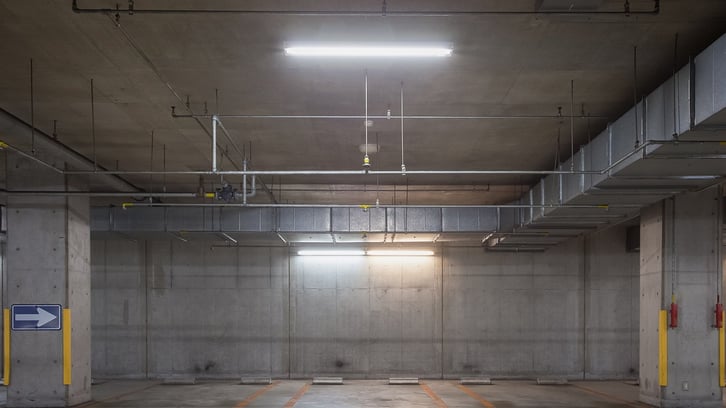location: Home >
News
What are the different types of ballasts?
Date:2019-03-20 Source:http://gielight.com provenance:admin

Have you ever heard a light bulb buzz?
If you answered yes, you’re actually incorrect. The buzzing you hear is not coming from the bulb itself. It’s actually coming from the ballast.Nerdy lighting technicalities, I know. Ballasts, light bulbs –– it's all the same, isn't it?
Well, not exactly. If you need to cover some basics on what a ballast is, try reading this article, “What is a ballast?”
If you’ve already got your ballast basics down, then read on my friend! We’ll be taking a deeper dive into ballast types and functionalities.
What's the difference between electronic and magnetic ballasts?
There are two lamp families that work with a ballast –– HID and fluorescent.
There are two types of ballasts in the fluorescent family: magnetic and electronic.
Magnetic ballasts are actually the older ballast technology. Both T12 linear fluorescents and two-pin CFLs use magnetic ballasts.
Fluorescent T8s and 4-pin CFLs, meanwhile, use an electronic ballast.
Electronic ballasts can put out multiple frequencies of electricity without needing input voltage altered. This eliminates any flickering and buzzing. Magnetic ballasts are typically the culprit for buzzing and flickering because they regulate electricity incrementally.
The process for swapping out magnetic ballasts for electronic ballasts is pretty simple and straightforward. This is the direction the lighting industry is headed in, so why not swap them sooner rather than later to optimize your space with better, quieter lighting?
Shop electronic fluorescent ballasts
Rapid start, instant start, and programmed start fluorescent ballast types
Fluorescent ballasts use three different types of starting technologies: rapid, instant, and programmed.
Here's a look at the difference between each.
Rapid start ballasts
Rapid start ballasts work kind of like preheating a oven. Imagine if an oven was preheated all the time so that, at any given moment, you could bake some cookies.
Rapid start ballasts rely on this preheating method so that, when the light switch is turned on –– at any given moment –– the lamp turns on straight away.
Have you ever hit a light switch and received a strobe light effect? My old apartment bathroom used to have lights like this, and I thought someone was throwing a dance party every morning at 6 a.m. Rude awakening, let me tell you.
Rapid start ballasts don't flicker, but they're not without their drawbacks. Here are two:
Rapid start ballasts are not very energy efficient
Lamps paired with rapid start ballasts will not reliably turn on if they are in sub 50-degree climates, like a freezer room or outside in cold climates
Shop rapid start ballasts
Instant start ballasts
Instant start lamps don’t use a preheating method. Instead, they send a high amount of voltage across the lamp upon the strike.
Typically, instant start ballasts use 1.5-2 watts less per lamp than rapid start ballasts. Instant start lamps also start reliably at temperatures as low as zero degrees.
Shop instant start ballasts
Programmed start ballasts
It always makes me feel important when I walk into a room and the lights instantly turn on. But you're really important, or skilled, if you can walk through a room with a programmed start ballast without the lights turning on. That’s when you know you’ve reached James Bond status.
Programmed start ballasts are typically paired with occupancy or motion sensors. That way, the ballast maximizes the number of lamp starting cycles while maintaining energy efficiency. Basically, if you turn fluorescent lamps on and off repeatedly under short time spans, you’re actually using more energy than if you had simply left the light on.
If you have a bathroom, or another area where there are several on-off cycles throughout the day, then a programmed start ballast may be the best to pair with your lighting.
Programmed start ballasts are also reliable at low temperatures.
Shop programmed start ballasts
Probe start and pulse start HID ballast types
There are only two types of starting methods for HID ballasts:
Probe start ballasts
Probe start ballasts are the older type and not very easy on the HID lamp. Electrons jump across the arc tube between two operating electrodes. Once the lamp is started the starting probe electrode is removed from the circuit.
The problem with this starting method is that it takes a long time for the lamps to warm up and reach their full brightness. Also, the re-strike period is much longer.
Shop probe start ballasts
Pulse start ballasts
Pulse start ballasts don’t use a starting probe electrode. Instead, they uses a high voltage igniter that works right alongside the ballast. This technology pulses to start the lamp.
This way, the life of the lamp is actually extended, and the lumens don’t depreciate as fast. Pulse start ballasts are also known for being more energy efficient than probe start ballasts.
Shop pulse start ballasts
Types of emergency ballasts
Emergency ballasts belong in their own category. There are all types of them and their purpose is to power a lamp at reduced light outputfor up to 90 minutes. Also, did you know that most emergency ballasts recharge themselves after each use? That is, until they reach full life capacity.
Are you shopping for an emergency ballast? Here are the four questions you need to answer to find the right product:
What type of lamp is it powering?
How many lamps is it powering?
How long does it need to power the lamps?
Is there a size requirement/ constraint for the fixture?
If you have the answers to these four questions, you’ll be able to get your exact emergency ballast.
In the previous:
Shunted vs Non-Shunted Lampholders
The next article:
Direct-lit vs. Edge-lit LED Light Panels
















